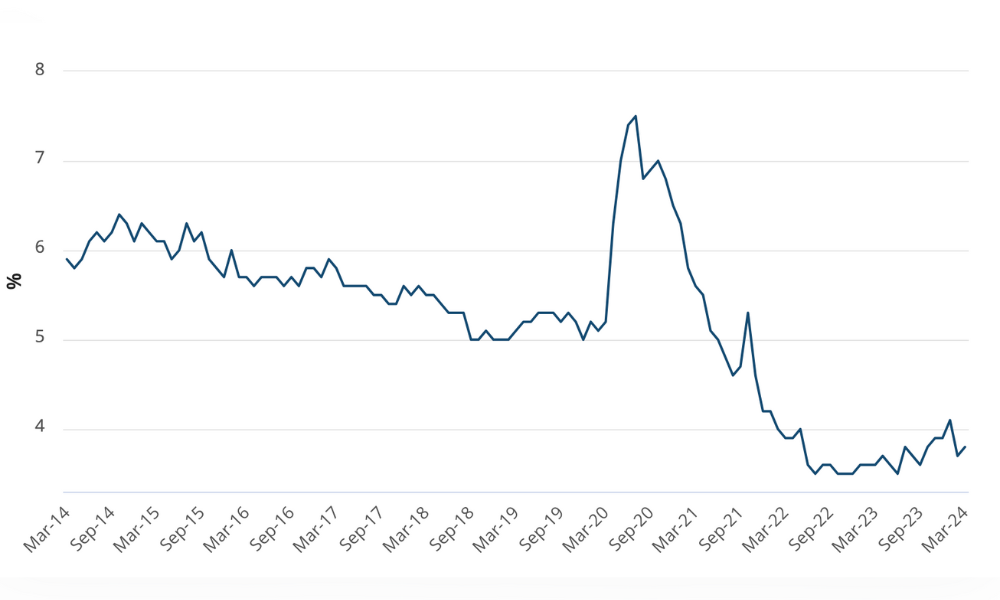With business leaders facing unprecedented stress and anxiety, HC investigates how executives can be more resilient to corporate demands
Economic uncertainty, cost pressures, external competition, and the fast-paced nature of emerging technology are taking their toll on corporate executives all around the globe.
As a result, many business leaders are facing unprecedented amounts of stress, anxiety, unhappiness, and poor health.
Since this decreased productivity can result in lost revenue and profits, HR professionals must learn to develop resiliency and face the demands of corporate life with strength and adaptability.
Researchers have identified three primary dimensions that constitute the trait of resiliency:
- Active Self-Management
- Taking Control
- Meaning and Purpose
Active Self-Management
The first step to fostering an empowered outlook lies in self-care. In order for leaders to be prepared to act swiftly and quickly adapt to new circumstances, they need to be well-rested, well-nourished, and capable of handling anything that might come their way.
In order to achieve this, it’s important to get enough sleep, eat well, exercise regularly, and engage in healthy relationships. If a stressful situation arises in the workplace, experts recommend breathing in deeply while counting to five, holding it there for five seconds, and then exhaling while counting to five.
Taking Control
It is also imperative that executives feel confident that they can handle their busy schedule. When leaders lose control of their workload, they are far more susceptible to succumbing to stress and anxiety.
To master a positive mindset, challenges in an optimistic light. Specifically, leaders should ask themselves:
Meaning and Purpose
Finally, the last dimension that comprises resiliency lies in meaning and purpose. If HR executives can attach a meaning to difficulties and missteps, they can handle the negative emotions accompanying them with relative ease.
Instead of focusing on the frustrating aspect of challenges or setbacks, consider any benefits that may come from conquering one’s obstacles. After all, as John F. Kennedy pointed out, “When written in Chinese, the word 'crisis' is composed of two characters. One represents danger and the other represents opportunity.”
This article was adapted from Growing true grit: How you can build resilience to thrive in the most challenging of times which was originally published in the April 2014 HRD Magazine. To read more click here.
As a result, many business leaders are facing unprecedented amounts of stress, anxiety, unhappiness, and poor health.
Since this decreased productivity can result in lost revenue and profits, HR professionals must learn to develop resiliency and face the demands of corporate life with strength and adaptability.
Researchers have identified three primary dimensions that constitute the trait of resiliency:
- Active Self-Management
- Taking Control
- Meaning and Purpose
Active Self-Management
The first step to fostering an empowered outlook lies in self-care. In order for leaders to be prepared to act swiftly and quickly adapt to new circumstances, they need to be well-rested, well-nourished, and capable of handling anything that might come their way.
In order to achieve this, it’s important to get enough sleep, eat well, exercise regularly, and engage in healthy relationships. If a stressful situation arises in the workplace, experts recommend breathing in deeply while counting to five, holding it there for five seconds, and then exhaling while counting to five.
Taking Control
It is also imperative that executives feel confident that they can handle their busy schedule. When leaders lose control of their workload, they are far more susceptible to succumbing to stress and anxiety.
To master a positive mindset, challenges in an optimistic light. Specifically, leaders should ask themselves:
- What is my ideal outcome of this situation?
- What is my thought process right now? Is it helping me reach that goal?
- What could I be thinking or doing that will help me reach that goal faster?
Meaning and Purpose
Finally, the last dimension that comprises resiliency lies in meaning and purpose. If HR executives can attach a meaning to difficulties and missteps, they can handle the negative emotions accompanying them with relative ease.
Instead of focusing on the frustrating aspect of challenges or setbacks, consider any benefits that may come from conquering one’s obstacles. After all, as John F. Kennedy pointed out, “When written in Chinese, the word 'crisis' is composed of two characters. One represents danger and the other represents opportunity.”
This article was adapted from Growing true grit: How you can build resilience to thrive in the most challenging of times which was originally published in the April 2014 HRD Magazine. To read more click here.





